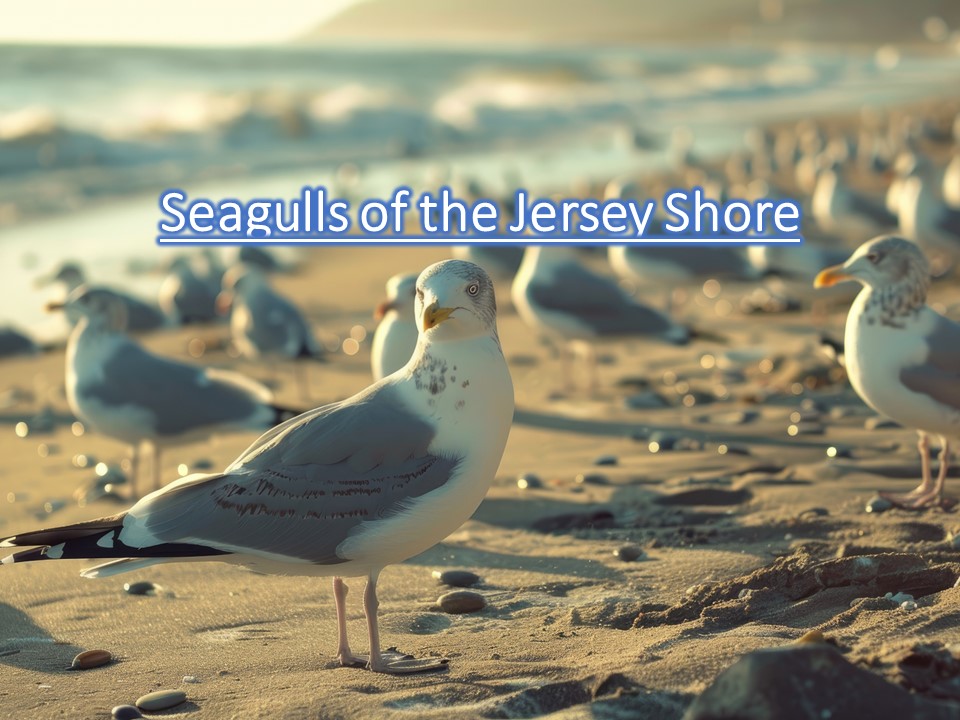31
July
2024
Seagulls of the Jersey Shore

Seagulls of the Jersey Shore
The Jersey Shore, with its sandy beaches and coastal habitats, is home to a variety of seagull species. These birds, known for their adaptability and distinctive calls, play an integral role in the ecosystem. Here, we explore the different types of seagulls found at the Jersey Shore, their migration patterns, and some interesting facts about each.
1. Herring Gull:
The Herring Gull (Larus argentatus) is one of the most common seagulls at the Jersey Shore. Easily recognizable by their grey backs, white underparts, and pink legs, these gulls are often seen scavenging for food along the beaches. During the winter, Herring Gulls migrate south to the Atlantic and Gulf coasts of North America. Historically, they were originally found in Europe and Asia but have since expanded their range to North America.
2. Great Black-backed Gull:
The Great Black-backed Gull (Larus marinus) is the largest gull species in the world. With their imposing size, black backs, and fierce demeanor, they are a dominant presence at the Jersey Shore. These gulls are known to prey on other seabirds and their eggs. During winter, they migrate to coastal regions as far south as the Carolinas. Interesting fact: despite their intimidating size, Great Black-backed Gulls are skilled at catching fish and crabs, showcasing their diverse diet.
3. Laughing Gull:
The Laughing Gull (Leucophaeus atricilla) is named for its distinctive, laughing call. With their black heads during the breeding season and red bills, they add a splash of color to the shore. Laughing Gulls migrate to the Caribbean and northern South America during the winter. They originally hail from the warmer coastal regions and are well adapted to life along the shore. These gulls often form large colonies, making them a social and noisy presence.
4. Ring-billed Gull:
Ring-billed Gulls (Larus delawarensis) are medium-sized gulls with a characteristic black ring around their bills. These gulls are highly adaptable and can be found not only on beaches but also in urban areas. In winter, they migrate to the southern United States and Mexico. Originally from inland lakes and rivers, they have expanded their range to coastal regions. Ring-billed Gulls are known for their opportunistic feeding habits, often seen scavenging in parking lots and dumps.
5. Lesser Black-backed Gull:
The Lesser Black-backed Gull (Larus fuscus) is a less common visitor to the Jersey Shore, distinguished by their dark grey to black backs and yellow legs. These gulls migrate from Europe and are seen along the East Coast during the winter months. Their presence at the Jersey Shore is a testament to their extensive migratory range. Interesting fact: Lesser Black-backed Gulls have a diverse diet, including fish, insects, and even small mammals.
Conclusion:
The seagulls of the Jersey Shore each bring their unique characteristics and behaviors to the coastal environment. Their migration patterns reflect their adaptability and resilience, showcasing the dynamic nature of these birds. Whether it's the imposing Great Black-backed Gull or the sociable Laughing Gull, each species contributes to the rich tapestry of life at the Jersey Shore.
~JSC










